Campaign Samples Social Marketing Positive Examples For samples of theories used in campaigns, see Theory Models in Action. The campaign samples provided represent large scale efforts that required significant resources. For those with limited resources, these examples are provided to highlight the successful messages that were developed and to illustrate the various mediums available to capture your audience.
REMEMBER: Social marketing campaigns need to utilize multiple media channels to saturate their target population before they can show behavioral effects!
GYT - It's Your Sex Life 
"GYT - It's Your SexLife.org," a campaign created by MTV and the Kaiser Family Foundation, includes campaign videos, special programming on MTV, banner ads and a comprehensive sexual health website for teens and young adults.
Campaign results:
Among MTV viewers (ages 16 to 24) surveyed who had seen the campaign:
- More likely to wait to have sex (60 percent)
- More likely to use condoms (73 percent)
- More likely to talk with a partner about safe sex (49 percent)
- Or more likely to talk with a parent about sexual risks (28 percent).
The Know HIV/AIDS Campaign
There have been several endeavors which have combined public service announcement (PSA) mass media campaigns with embedded public health storylines in existing programming. One example is the collaboration of the Kaiser Family Foundation and Viacom who came together to launch an HIV/AIDS media campaign in which they used many of the communication tools of the corporate world to address the epidemic.
The KNOW HIV/AIDS Campaign used PSAs, outdoor and print advertising. Viacom ordered the producers of its television shows to include storylines about HIV/AIDS in their popular dramas and comedies in an effort to raise awareness and encourage prevention, counseling, and testing.
One component of the campaign called "Rap-It-Up," was disseminated through Black Entertainment Television (BET) and other networks targeting African Americans. 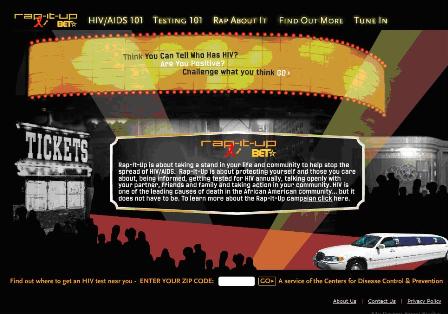
The multi-faceted campaign included special programming, PSAs, online content on BET.com, mobile testing, teen forums, and educational materials on HIV/AIDS for middle and high school students. Rap-It-Up influenced self-reported awareness and intentions to practice safe sex among the target audience of youth ages 18 to 24.
Los Chidos comic book
Behavior Works is using a graphic novel similar to a comic book to reach Latino men with reproductive health messages. The novel is designed to encourage men to be more involved and supportive of their partners' decision to use a contraceptive method; to increase men's knowledge of contraceptive methods (including side effects) and reproductive anatomy; and to give tips on how men can get involved in their own reproductive health and support their partner when making and sustaining family planning decisions. 
In the book, El Conejo accompanies his girlfriend to the clinic to learn how to prevent pregnancy and gets a few ideas about how to be a better partner. Chuy and his partner had a difficult time remembering to take the pill every day so they find another method that better suits them. Chaparro, who never quite measures up to the others, has an important condom message to share at the end. The novels were handed out to clinic clients, to female patients to take back to their partners, and during community outreach activities. To view the comic book, please visit the Behavior Works website.
The I KNOW Campaign 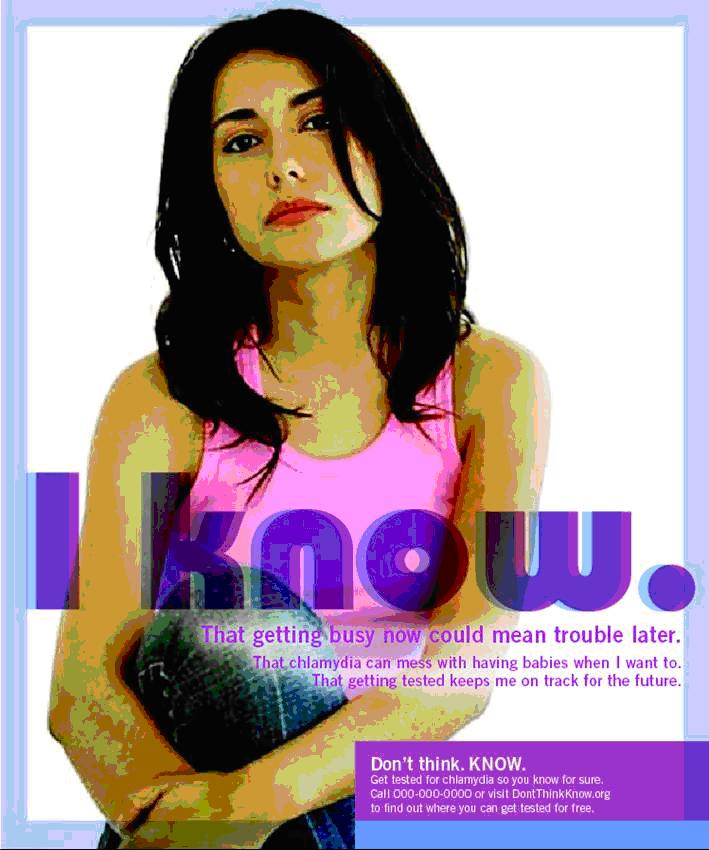 The I KNOW Campaign was created due to the alarming rates of chlamydia and gonorrhea prevalence among women of color in Los Angeles County. The main objective was to motivate young women of color to get tested and treated. The campaign used the CDC's recommendations to promote annual screenings. The secondary objective of the campaign was to increase awareness of chlamydia and gonorrhea, including prevention, transmission, symptoms, and complications. The I KNOW Campaign was created due to the alarming rates of chlamydia and gonorrhea prevalence among women of color in Los Angeles County. The main objective was to motivate young women of color to get tested and treated. The campaign used the CDC's recommendations to promote annual screenings. The secondary objective of the campaign was to increase awareness of chlamydia and gonorrhea, including prevention, transmission, symptoms, and complications.
The following messages were advertised to the community:
Chlamydia and gonorrhea can have consequences that seriously affect your health and your future Normalize testing - encourage young women to ask for a test by name Regularize testing - encourage young women to get tested for STDs at least once a year
The target audience - 15-25 year old women of color, living in urban Los Angeles
African Americans English-speaking Latinas Spanish-speaking Latinas
Key Features Many women responded strongly to the empowerment idea and viewed the main characters in each ad as inspirational. Ideas like confidence, assuredness and pride were key "take-aways" from the campaign. Certain idiomatic expressions, such as "friends with benefits," seemed timely and relevant. The mantra of "Don't think. Know" suggests something new to people and caused them to think about their behaviors in a different way. Interruptive ideas, especially those in public spaces, would have the greatest impact with a lasting impression. Staying on track for the future and being able to realize goals, and consequently not be hindered by the complications of STDs, was a motivating factor for young women.
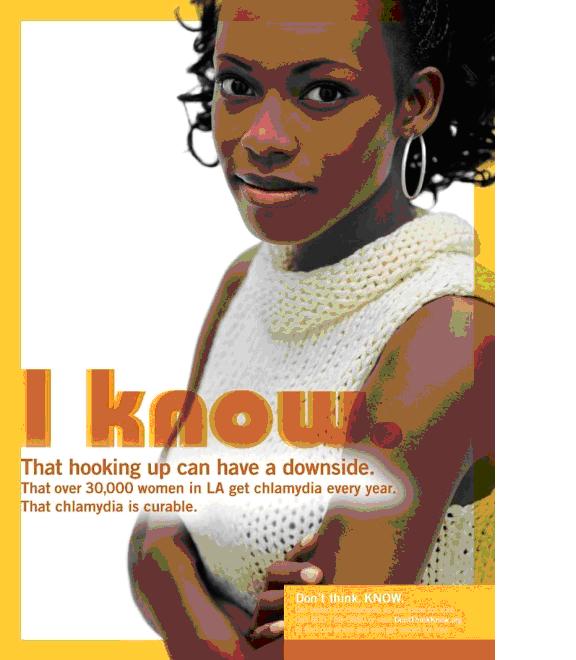 Posters, postcards, bus ads, condom packets and lip balms were all created with varying messages based on the qualitative data results. Later, internet ads and PSAs were created to make a larger community impact. Visit the campaign website for more information. Posters, postcards, bus ads, condom packets and lip balms were all created with varying messages based on the qualitative data results. Later, internet ads and PSAs were created to make a larger community impact. Visit the campaign website for more information.
NYC Comdoms: Get Some! The New York City Department of Health and Mental Hygiene introduced an NYC branded condom and then used a Facebook page and Facebook application to promote the use of condoms. 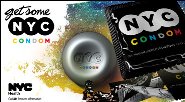 Valentine’s Day 2007, New York City Department of Health and Mental Hygiene introduced the city’s official condom. Recently, they introduced a Facebook application to promote condom use. They were able to circulate 1,500 e-condoms through Facebook messages. Valentine’s Day 2007, New York City Department of Health and Mental Hygiene introduced the city’s official condom. Recently, they introduced a Facebook application to promote condom use. They were able to circulate 1,500 e-condoms through Facebook messages.
The Facebook page reveals facts such as NYC has more AIDS cases than LA, SF, and Miami and Washington combined; more than 100,000 NYC residents are HIV positive; 1 out of every 25 men living in Manhattan is HIV positive. By using Facebook, they are helping million of residents spread the word about condom use.
(This campaign has not been evaluated.)
Social Marketing Doesn't Always Work POWER (Prevention Options for Women Equals Rights) 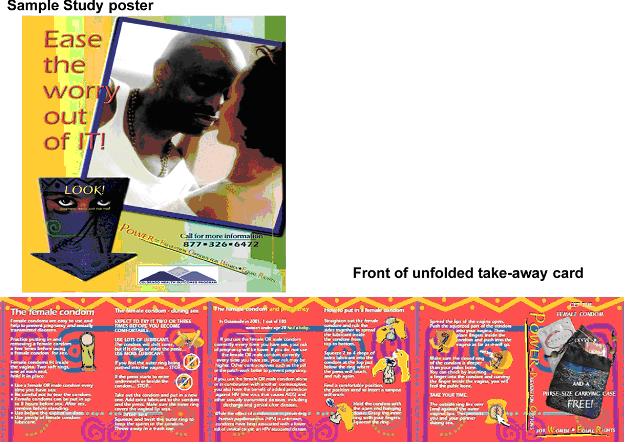
The POWER social marketing campaign (Prevention Options For Women Equals Rights) was funded by the Centers for Disease Control and Prevention (CDC) and The Association of Teachers of Preventive Medicine. It was designed to: increase awareness of female condoms, to change attitudes toward and intentions to use male or female condoms, to increase the use of both kinds of condoms among English-speaking Latina and African American women 15-25 years of age residing in neighborhoods of California and Nevada with high rates of teen births and sexually transmitted infections.
Six of the 12 selected neighborhoods were randomly selected to receive the POWER social marketing campaign. A pre-and-post campaign survey was used to determine the efficacy of POWER. They found no differences between neighborhoods with and without the POWER campaign with regard to the primary outcomes. Establishing the efficacy of a social marketing campaign is challenging, and this group's randomized trial showed a null effect. NEXT PAGE PREVIOUS PAGE |